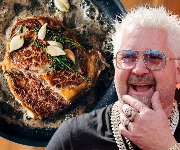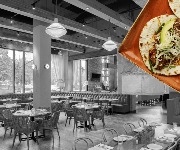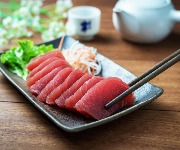Why my kids and I are giving up sugar

Scared by the amount of sugar in a pot of ‘healthy’ yoghurt, cookery school teacher Beverley Glock decided to cut the white stuff from her family’s diet. Here’s how she got on.
In moderation sugar is OK, but so are most foods. The real issue is that we don’t consume sugar in ‘moderation’ anymore. Are you aware of how much sugar you’re eating every day? And what steps can you take to tackle the problem at home?
Secret sugar
According to the World Health Organisation (WHO), the level of sugar consumption we should ‘aim’ for on a daily basis is 5% of our daily energy intake. And that isn’t just the white granulated kind of sugar – it includes fruit sugar, honey, fruit juice and syrups too.
What does 5% look like? It’s around 10-15g/2-3 teaspoons for an adult, less for children. Look at your weekly food shop, check out your cereal or that ready meal in your fridge. Do any of them have more than 15g of sugar per portion? This applies to an awful lot of processed foods.
For years I’ve inspected food labels and purchased ‘low fat’ yoghurts and the like on the basis that fat is ‘bad’ and by reducing fat I would retain my figure and be healthy. But as sugar hits the news more than fat nowadays, I thought I’d look into reducing my sugar intake too.
Eating my favourite low fat yoghurt with a little granola for breakfast sounds healthy enough, right? Wrong. Low fat, but with 26g of sugar per pot (a tablespoon of the stuff), it’s far more than WHO’s daily recommended allowance. I was horrified when I first found that out. Checking other labels was equally scary, so the experiment began. It’s not just about reducing my own consumption of sugar, but the rest of the family’s too. How can I get my children off sugar without them noticing?
What do I mean by sugar?
I’m not just talking about the white granulated stuff you stir into tea. It’s also those lovely dark brown, sticky, delicious sugars. Just because they’re brown doesn’t mean they’re better. Sugar, be it the produce of sugar beet or sugar cane, refined or unrefined, organic, fair trade, Demerara, muscovado or caster… it’s all still sugar, and it all still counts.
A lot of sugar is hidden in processed foods. A shop-bought 9” pizza has 20g of sugar in it, for example. My own, homemade pizzas don’t include any sugar in the dough – it’s completely unnecessary in my opinion. When propositioned with the store-bought pizza, my children wouldn’t eat it; they had a mouthful and said, “It tastes too sweet”.
Biscuits are my downfall – I can’t resist them, and chocolate too. But their sugar levels are astronomical, and so recently I stopped buying both and instead chose to make things like pitta crisps (use wholemeal pitta breads to make them even healthier), cheese scones and breadsticks for the children to snack on when they come home from school.
It’s been two weeks since I bought any sweet stuff, and the first reaction to our family detox came from my 12-year-old son. He was eating his favourite yoghurt, but after the first mouthful he declared that “it was too sweet” and didn’t eat the rest. The next morning the same thing happened with his bowl of Cheerios. Firstly he thought the milk was “off” because they “tasted funny”, but upon learning that wasn’t the problem, he swapped to plain old Weetabix instead. It’s amazing to have a son who’s going off sugar.
What can I use instead?
You could of course use artificial sweeteners such as saccharin, aspartame, stevia or xylitol in place of sugar. But I’m dubious about using them in the food I cook for the children, both for health reasons and the fact that they have an aftertaste.
I’ve made muffins with very ripe bananas that are naturally sweet, and I also use vanilla and cinnamon for hits of sweetness. Agave syrup, though expensive, is great – it’s low GI and apparently better for you than sugar (although even that is hotly debated).
Other low-sugar ideas include homemade muesli with plain yoghurt, fruit, nuts, seeds and a sprinkle of cinnamon, with a little agave on top if desperate. Greek yoghurt is another option – stir in some fresh berries, or for instant frozen yoghurt whizz with some frozen blackcurrants or raspberries and a little honey or agave if needed.
You can cut down the amount of sugar you eat by checking labels and cooking from scratch. If you cut out processed foods then you will slash your sugar intake massively. Adapt your favourite fruit muffins recipe by halving the amount of sugar called for – I bet you won’t be able to tell the difference.
This brings me back to the concept of ‘moderation’, or eating just a little of what you fancy. This goes for fats and salt as well as sugar. One cupcake occasionally is fine. Enjoy the flavour, relish it, then go and have a long walk to work it off and eat healthily for the rest of the day.
The perils of booze
Alcohol is also high in sugar. “Oh no!” I hear you cry. But there is a solution… gin. It hasn’t the sugar of beer and wine, so I treat myself to a G&T on a Friday and Saturday night. And I’m discovering different gin brands because of it! My favourite has cucumber and lime in it, no sugar and it’s delicious. I’m also allowing myself champagne, as this is the lowest sugar wine available.
What’s the best way to eat healthily? Cook from scratch, avoid fruit juice, and don’t add sugar. And crucially, in the words of Michael Pollan in his fabulous book Food Rules, “avoid foods that have some form of sugar (or sweetener) listed amoung the top 3 ingredients.”
Sugar image taken from Editor at Large
You might also like
Most Recent
Comments
Be the first to comment
Do you want to comment on this article? You need to be signed in for this feature








